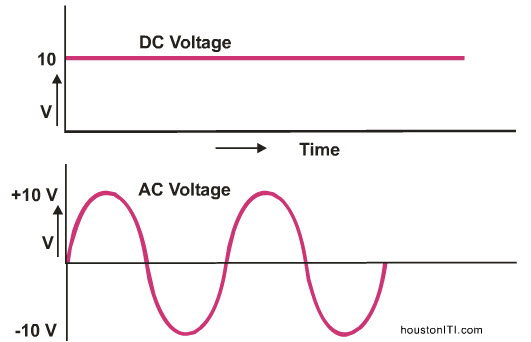 |
Summary of Differences between AC and DC
In the preceding sections, we have been studying direct current or DC. Electric power is used in two basic forms: AC or DC (alternating current, or direct current.)
We have already learned that voltage drives the current through a resistor (or an electrical load of any kind.) Therefore alternating current needs a source of alternating voltage to produce it. As a matter of fact, the alternating voltage comes first - first we create alternating voltage, which, in turn, creates alternating current. Later on this section we will learn how to produce alternating voltage.
When we are learning the differences between ac and dc, it does not matter we discuss voltage or current. The differences between alternating voltage and dc voltage are the same as differences between alternating current and dc current.
An awkward moment: We often use the term "ac current," which is same as saying alternating current current. This is awkward but for the sake of clarity it is better to say ac current.
The figure provided here illustrates the difference between the two types of electricity. Let’s consider the top figure first, which is illustrating DC voltage.
Direct Current (DC)
Notice the relationship between voltage and time. The x-axis (the horizontal axis) represents time and the vertical axis represents voltage. Notice that when we turn the battery on at time zero, the voltage reaches a certain value. After that, as time goes on, the value of the voltage does not change. This is a key characteristic of DC Voltage.